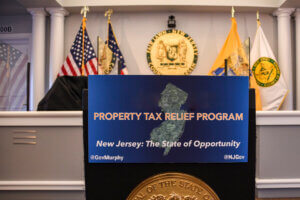As New Jersey enters the third year of its recovery from Superstorm Sandy, Monmouth University’s tracking survey of the state’s hardest hit residents finds that a majority say they still need money to elevate or rebuild their homes. In fact, there is little change in the needs these residents had one year after the storm and the needs they express today. Most residents who received housing or utility payment assistance from the Sandy Homeowners and Renters Assistance Program (SHRAP) were satisfied with their experience. However, fewer than half actually applied for the program as many were unaware of its existence.
Two years after Sandy devastated parts of New Jersey, 58% of impacted residents say they need funds to elevate or rebuild their homes. Majorities of residents who are still displaced (61%), who are back in their homes (59%) and even those who were displaced for less than a month (55%) all say they need financial assistance to rebuild or elevate their homes. Not surprisingly, respondents who say they have yet to start rebuilding (84%) and those who have started to rebuild (70%) are considerably more likely to need this assistance than those who have finished rebuilding (39%).
“The state’s rebuilding grant program has been slow-going for most of New Jersey’s hard-hit residents. Even families who were able to move back into their homes shortly after Sandy hit are still having a hard time paying for needed repairs”, said Patrick Murray, director of the Monmouth University Polling Institute.
Four-in-ten (42%) hard-hit residents still need assistance replacing furniture and appliances two years after Sandy, which is down only slightly from last year when 47% said they needed this assistance. Respondents who are currently displaced (67%) continue to be more likely to report needing this help when compared to those who are back in their homes (29%) or who were displaced for less than a month (25%). Interestingly, the level of need for furniture and appliance replacement among each of these groups is almost the same as it was last year.
About 3-in-10 (31%) impacted New Jerseyans who participated in the survey need help understanding rebuilding rules and regulations. A similar 30% need help obtaining the necessary documents to apply for Sandy relief programs.
About 1-in-4 still need assistance with making mortgage (28%) or rent (23%) payments. These results are basically unchanged from one year ago and continue to affect all groups, with the highest level of need being rent payments among those still displaced (47%).
In a related finding, the percentage of impacted residents who need assistance paying their utilities has gone up somewhat from 21% last year to 28% now. Participants of the survey who are currently displaced (33%), who have been able to move back into their homes (23%) or who were displaced for less than a month (29%) are all 7 to 9 percentage points more likely to report needing help paying for utilities than they were one year ago.
In the fall of 2013, the Christie Administration announced the creation of the Sandy Homeowners and Renters Assistance Program (SHRAP) to provide assistance with rent, mortgage, and utility payments, as well to replace furniture and appliances. Most recipients of SHRAP are satisfied with how the program has performed, however fewer than half of impacted residents actually applied for this assistance.
Just under half (48%) of Sandy-affected residents who participated in the survey report registering for SHRAP. About one-quarter (25%) did not apply for SHRAP because they were unaware the program existed. Another 11% of non-applicants say they did not think they qualified and just 10% say they did apply because they did not need this assistance. The vast majority (84%) of those who applied for SHRAP assistance report they were in fact approved for the program.
About 7-in-10 of these SHRAP recipients say they are very (42%) or somewhat (29%) satisfied with the program, while only 30% are dissatisfied. This level of satisfaction comes despite the fact that a third (33%) of those approved for SHRAP say they have been reported to a credit agency due the program making a late rent or mortgage payment and 1-in-4 (26%) who say they have had a situation where the program lost or misplaced their documents. Among those who report lost or misplaced documents, 59% say they were reported to a credit agency because SHRAP missed a rent or mortgage payment.
Respondents who have not been reported to a credit agency for a late payment (81%) are considerably more satisfied with the program than those who were (51%). Respondents who say the program has never lost or misplaced their documents (81%) are also more likely to be satisfied than those who experienced this problem (45%).
“The SHRAP program was well-received by most of those who used it. However, many residents did not apply simply because they were unaware of the program. This suggests that outreach could have been better,” said Tim Tracey, project director for Monmouth University’s Sandy Recovery Survey. “With families limited to six months of SHRAP assistance, it is likely that the need for housing and utility assistance will climb in the coming year as many of these residents remain displaced from their homes.”
The survey also asked about several other continuing needs. Two years after Sandy’s landfall, about 1-in-5 hard-hit residents need assistance applying for construction and rebuilding permits (22%), obtaining legal assistance (21%), obtaining mental and emotional counseling (21%), assistance with debt management (19%), help finding out whether their home is in the floodplain (19%) and assistance with cleanup and debris removal (18%).
Fewer need assistance with healthcare costs and coverage (15%), finding a temporary place to live (15%), purchasing food (12%), obtaining a buyout of their home (12%), employment assistance (10%), obtaining flood insurance (10%), obtaining homeowners or renters insurance (9%), and finding a new permanent home (6%). Monmouth asked about many of these needs a year ago. There has not been much change in the level of need for items that appeared on both surveys.
About Monmouth University’s NJ Sandy Recovery Panel:
This release marks the seventh installment of findings from Monmouth University’s tracking panel of New Jersey residents who were hardest hit by Superstorm Sandy. Results from the first wave of the panel were released in October 2013, February 2014 and March 2014. Monmouth has also released seven polls tracking statewide opinion of the recovery’s progress over the past two years as well as a separate survey of New Jersey coastal residents’ post-storm views of rebuilding policies. Monmouth University’s Polling Institute believes it has produced more research on post-Sandy public attitudes and behaviors than any other group in the country. Monmouth’s reports can be found at https://www.monmouth.edu/polling-institute .
Methodological Note:
The Monmouth University Polling Institute conducted the Sandy Recovery Survey online and by telephone with New Jersey residents who were displaced from their homes for a month or more or sustained $8,000 or more in damage to a primary home due to Superstorm Sandy. The results presented in this report were based on interviews completed between July and October 2014. This survey is part of a panel study designed to track the experiences of New Jersey residents who continue to be impacted by the storm. The initial survey was conducted between September 2013 and January 2014.
The results presented in this report comparing changes from Year 1 to Year 2 are for 630 New Jersey residents who participated in both the initial survey last year and this year’s follow up survey. The results reported for demographic sub-groups are among all 747 respondents who participated in this year’s survey. Because survey respondents were recruited using a variety of non-probability methods, the survey results cannot be statistically projected to the larger population of all Sandy victims in the state. The value of these survey findings rests in comparisons over time among the same group of residents to better understand individual-level recovery progress as well as for internal poll comparisons among different groups (e.g. variations between those who remain displaced and those who are now back in their homes, variations by income levels, etc.).
This project was designed to complement Monmouth University’s statewide and regional poll tracking of Sandy issues and specifically to highlight continuing issues in New Jersey’s Sandy recovery and provide recommendations for improving communication channels between hardest-hit residents and public/private authorities. This project was made possible by a New Jersey Recovery Fund grant from the Community Foundation of New Jersey and the Geraldine R. Dodge Foundation.
Survey Questions
1. Do you need assistance with any of the following now?
Money to pay for home rebuilding or elevation
Help with replacing furniture and appliances
Help with understanding rebuilding/ construction codes and regulations
Help with getting necessary documents for Sandy assistance programs
Help with utility payments (water, gas, electric)
Help with making mortgage payments
Help with making rent payments
Help applying for construction/rebuilding permits
Legal assistance
Help with mental/emotional counseling
Obtaining information about where my home is in the floodplain
Help with debt management
Help with cleanup/debris removal
Finding a temporary place to live while home is being repaired
Help with healthcare costs/coverage
Help with purchasing food/feeding your family
Obtaining buyout of your home
Help with employment
Obtaining flood insurance
Obtaining homeowners/renters insurance
Finding a permanent home to relocate to
2. Did you apply for SHRAP assistance to pay your mortgage, rent, or utility bills or to replace essential items like appliances and furniture?
[Question 3 was asked of respondents who did not apply for SHRAP assistance, n=320.]
3. Why didn’t you apply for SHRAP? [Note: percentages add to more than 100% because multiple response were accepted.]
[Question 4 was asked of respondents who applied for SHRAP assistance, n=300.]
4. Were you approved for SHRAP assistance?
[Questions 5-7 were asked of respondents who were approved for SHRAP assistance, n=238.]
5. How satisfied or dissatisfied are you with the SHRAP assistance program?
6. Have you had a situation where SHRAP was late making a mortgage or rent payment and you were reported to a credit agency?
7. Have you had a situation where the SHRAP office lost or misplaced your documents?
Click on pdf file link below for full methodology and results by key demographic groups.




